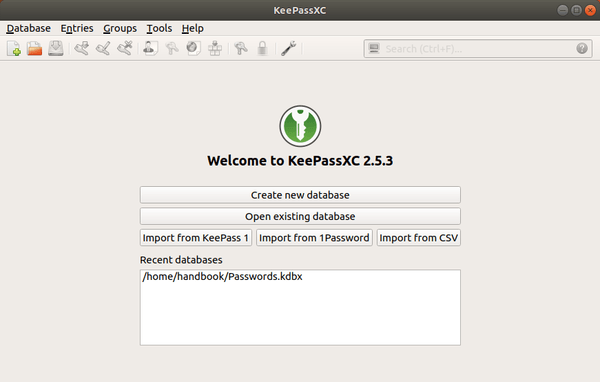
In other words, by default it is a local or “offline” password manager, while 1Password, LastPass, and their ilk can be thought of as “cloud-based” password managers. KeePassXC is a bit different from other password managers like 1Password or LastPass in that it simply creates and manages an encrypted password database that lives on your computer like any other file. How is KeePassXC Different from Other Password Managers?

I’ll also note that KeePassXC is on Twitter. I’ll also note that KeePassXC has a quickstart guide on their site, as well as a wiki, and the Electronic Freedom Foundation has there own guide to KeePassXC. I’d also like to note that I drew some inspiration and methodology from Martin Shelton’s “KeePass for Beginners” post, which you may also find useful. If you spot any errors or have any suggestions for this post, feel free to contact me via Twitter or elsewhere. I’m not a security expert or security professional, just a social media editor who manages a lot of accounts, so buyer beware from this point on. Another good resource is KeePassXC’s official FAQ page. This guide is for OS X / macOS users (hereto referred to as “macOS”), though KeePassXC is built to work with Linux and Windows as well, and this guide may be helpful for those users too.

This is a basic guide of how to get started with KeePassXC. KeePassXC is open-source, which means its code is public and thus open to inspection by all. As the project owners (of which I am not) put it: It is a community fork of KeePassX, a native cross-platform port of KeePass Password Safe, with the goal to extend and improve it with new features and bug fixes. KeePassXC is an open-source password manager. Level 4: Securing Our Database With Multiple FactorsĪppendix A: Verifying Your KeePassXC Download Without Using the Command Line What is KeePassXC?.Since this guide may be out-of-date, I’d recommend their new, official “Getting Started Guide”. While it still may be helpful to some, KeePassXC has changed quite a bit in the last three years, both in functionality and aesthetics (almost universally for the better!).

2020 UPDATE: The guide below was written back in 2017.


 0 kommentar(er)
0 kommentar(er)
